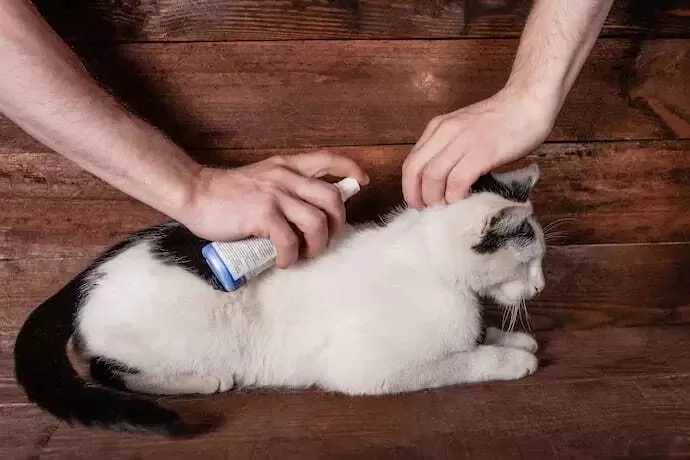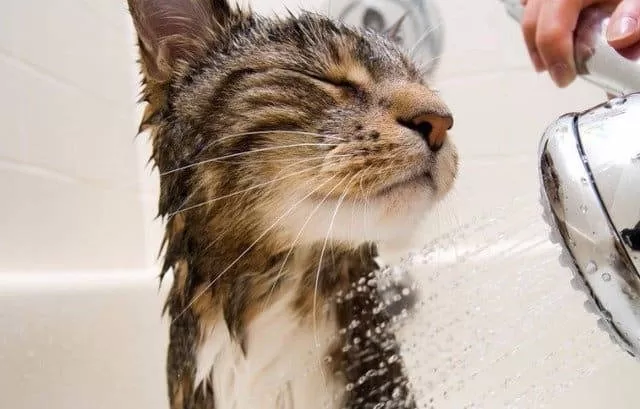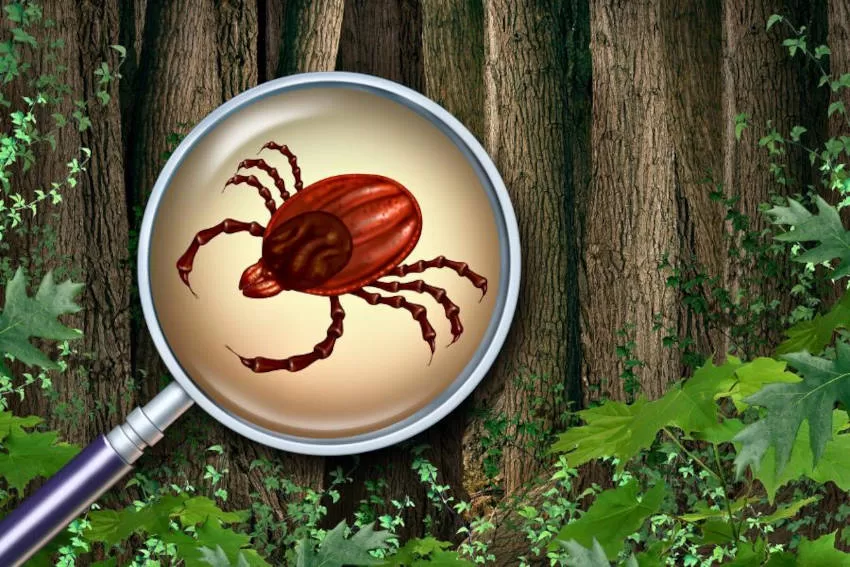Introduction
Fleas and ticks are not just a nuisance for cats, they can also pose serious health risks. These tiny parasites can cause a range of problems, from skin irritations and allergies to more serious conditions such as anemia and tick-borne diseases. It is important for cat owners to understand the dangers of fleas and ticks and take steps to prevent infestations and detect them early. Regular grooming, choosing the right prevention products, and keeping your home clean are all essential in the fight against fleas and ticks.
Understanding the Dangers of Fleas and Ticks for Cats
Fleas and ticks can cause a variety of health problems for cats. Fleas can cause skin irritations and allergies, leading to excessive scratching and hair loss. They can also transmit tapeworms, which can cause digestive issues in cats. Ticks, on the other hand, can transmit serious diseases such as Lyme disease and Rocky Mountain spotted fever. These diseases can cause symptoms ranging from mild fever and fatigue to more severe complications such as joint pain and organ damage.

Prevention and early detection are key in protecting your cat from the dangers of fleas and ticks. Regular grooming can help prevent infestations by removing any fleas or ticks that may be present on your cat’s fur. It also allows you to check for any signs of infestation or bites. Early detection is important because the sooner you catch and treat a flea or tick problem, the easier it is to get rid of them and prevent further complications.
The Importance of Regular Grooming for Preventing Fleas and Ticks
Regular grooming is an essential part of preventing flea and tick infestations in cats. Grooming helps to remove any fleas or ticks that may be present on your cat’s fur, preventing them from biting and causing harm. It also allows you to check for any signs of infestation or bites, so you can take action immediately.
When grooming your cat, start by combing through their fur with a fine-toothed flea comb. This will help to remove any adult fleas or ticks that may be present. Be sure to comb through all areas of your cat’s body, paying special attention to the neck, back, and tail. If you find any fleas or ticks, carefully remove them using tweezers or a tick removal tool. Be sure to dispose of them properly to prevent re-infestation.

In addition to combing, regular bathing can also help to prevent flea and tick infestations. Use a cat-specific flea and tick shampoo, as regular shampoos may not be effective in killing these parasites. Follow the instructions on the shampoo bottle and be sure to rinse your cat thoroughly to remove any residue.
Choosing the Right Flea and Tick Prevention Products for Your Cat
There are a variety of flea and tick prevention products available for cats, including topical treatments, oral medications, and collars. When choosing a product, it is important to consider factors such as your cat’s age, weight, and overall health, as well as the effectiveness and safety of the product.
Topical treatments are applied directly to your cat’s skin and are absorbed into their bloodstream. They are typically applied once a month and provide protection against fleas and ticks. Oral medications, on the other hand, are given to your cat orally and work by killing fleas and ticks when they bite your cat. These medications are also typically given once a month.
Collars are another option for flea and tick prevention. These collars contain chemicals that repel and kill fleas and ticks. They are worn around your cat’s neck and provide protection for several months. It is important to choose a collar that is specifically designed for cats, as dog collars may contain ingredients that are toxic to cats.
When choosing a flea and tick prevention product, it is important to read the instructions carefully and follow them exactly. Some products may not be suitable for certain cats, such as those with allergies or underlying health conditions. If you are unsure about which product to choose, consult with your veterinarian for guidance.
Natural Remedies for Fighting Fleas and Ticks on Your Cat
If you prefer to use natural remedies for flea and tick prevention, there are several options available. These remedies are typically made from natural ingredients and are considered safer for cats than chemical-based products. However, it is important to note that natural remedies may not be as effective as traditional flea and tick prevention products.
One natural remedy for flea and tick prevention is the use of essential oils. Certain essential oils, such as lavender, eucalyptus, and cedarwood, are known to repel fleas and ticks. You can dilute these oils with water and spray them onto your cat’s fur, or you can add a few drops to their shampoo or collar. Be sure to use essential oils that are safe for cats, as some oils can be toxic to them.

Another natural remedy is the use of diatomaceous earth. This fine powder is made from the fossilized remains of tiny aquatic organisms and works by dehydrating fleas and ticks. You can sprinkle diatomaceous earth onto your cat’s fur and bedding, or you can mix it with water to create a paste and apply it directly to their skin. Be sure to use food-grade diatomaceous earth, as the industrial-grade version can be harmful to cats.
While natural remedies can be effective in repelling fleas and ticks, they may not provide the same level of protection as traditional prevention products. It is important to monitor your cat closely for any signs of infestation and seek veterinary care if necessary.
Tips for Keeping Your Home Flea and Tick-Free
Preventing fleas and ticks from entering your home is just as important as preventing infestations on your cat. These parasites can easily hitch a ride into your home on your cat’s fur or on your clothing, so it is important to take steps to keep your home clean and flea/tick-free.
One of the most effective ways to keep your home flea and tick-free is to vacuum regularly. Vacuuming not only removes any fleas or ticks that may be present, but it also helps to remove their eggs and larvae. Be sure to vacuum all areas of your home, paying special attention to areas where your cat spends a lot of time, such as their bedding and favorite resting spots.

In addition to vacuuming, it is important to wash your cat’s bedding regularly. Fleas and ticks can lay their eggs in your cat’s bedding, so washing it in hot water can help to kill any eggs or larvae that may be present. Be sure to dry the bedding on high heat to ensure that any remaining parasites are killed.
Another tip for keeping your home flea and tick-free is to keep your yard well-maintained. Fleas and ticks thrive in tall grass and dense vegetation, so keeping your yard trimmed and free of debris can help to reduce their populations. You can also create a barrier around your yard by using cedar chips or diatomaceous earth, as these substances are known to repel fleas and ticks.
The Risks of Flea and Tick-Borne Diseases for Cats
Fleas and ticks can transmit a variety of diseases to cats, some of which can be serious or even life-threatening. It is important for cat owners to be aware of these diseases and the symptoms to watch for.
One of the most common flea-borne diseases in cats is flea allergy dermatitis. This condition is caused by an allergic reaction to flea saliva and can cause severe itching, hair loss, and skin infections. Another common flea-borne disease is bartonellosis, also known as cat scratch disease. This disease is caused by the bacteria Bartonella henselae, which is transmitted to cats through flea bites. Symptoms of bartonellosis in cats include fever, lethargy, and swollen lymph nodes.
Ticks can also transmit a variety of diseases to cats, including Lyme disease, Rocky Mountain spotted fever, and ehrlichiosis. These diseases can cause a range of symptoms, including fever, fatigue, joint pain, and organ damage. If left untreated, they can lead to more serious complications and even death.
It is important to monitor your cat closely for any signs of flea or tick-borne diseases and seek veterinary care if necessary. Your veterinarian can perform tests to diagnose these diseases and recommend appropriate treatment options.
How to Check Your Cat for Fleas and Ticks
Regularly checking your cat for fleas and ticks is an important part of prevention and early detection. Here is a step-by-step guide for checking your cat for these parasites:
1. Start by combing through your cat’s fur with a fine-toothed flea comb. Pay special attention to areas where fleas and ticks are commonly found, such as the neck, back, and tail. Look for any signs of fleas or ticks, such as small black dots or tiny brown insects.

2. If you find any fleas or ticks, carefully remove them using tweezers or a tick removal tool. Grasp the parasite as close to the skin as possible and gently pull it straight out. Be sure to dispose of the parasite properly to prevent re-infestation.
3. After removing any fleas or ticks, check your cat’s skin for any signs of bites or irritation. Flea bites are typically small red bumps that may be itchy or painful. Tick bites, on the other hand, may appear as small red welts or scabs.
4. If you notice any signs of infestation or bites, consult with your veterinarian for further guidance. They can recommend appropriate treatment options and provide advice on preventing future infestations.
Treating Flea and Tick Infestations on Your Cat
If your cat has a flea or tick infestation, it is important to take immediate action to get rid of these parasites. There are several treatment options available, including topical treatments, oral medications, and shampoos.
Topical treatments are applied directly to your cat’s skin and are absorbed into their bloodstream. They work by killing adult fleas and ticks and preventing their eggs from hatching. These treatments are typically applied once a month and provide long-lasting protection.
Oral medications are another option for treating flea and tick infestations. These medications are given to your cat orally and work by killing fleas and ticks when they bite your cat. They are typically given once a month and provide systemic protection.

Shampoos can also be used to treat flea and tick infestations. These shampoos contain chemicals that kill adult fleas and ticks on contact. They are typically used in conjunction with other treatments, such as topical treatments or oral medications, for maximum effectiveness.
It is important to follow the instructions on the treatment product carefully and continue treatment for the recommended duration. Failure to do so may result in incomplete eradication of the parasites and re-infestation.
Preventing Fleas and Ticks in Outdoor Cats
Preventing flea and tick infestations in outdoor cats can be more challenging than in indoor cats, as outdoor cats have a higher risk of coming into contact with these parasites. However, there are several steps you can take to protect your outdoor cat from fleas and ticks.
One of the most effective ways to prevent infestations in outdoor cats is to use a flea and tick prevention product. There are several options available, including topical treatments, oral medications, and collars. Consult with your veterinarian to determine which product is best for your cat.
In addition to using prevention products, it is important to regularly groom your outdoor cat to check for any signs of infestation or bites. Comb through their fur with a fine-toothed flea comb and remove any fleas or ticks that you find. Be sure to dispose of them properly to prevent re-infestation.
Another tip for preventing infestations in outdoor cats is to keep their outdoor environment clean and well-maintained. Remove any debris or tall grass where fleas and ticks may hide, and regularly clean and disinfect their outdoor bedding.
If you have both indoor and outdoor cats, it is important to take steps to protect your indoor cats from outdoor cats. Outdoor cats can easily bring fleas and ticks into your home, so be sure to regularly groom and check your indoor cats for any signs of infestation. You may also want to consider keeping your indoor and outdoor cats separate to minimize the risk of transmission.
When to Seek Veterinary Care for Flea and Tick Problems in Your Cat
In some cases, flea and tick problems in cats may require veterinary care. It is important to be aware of the signs that your cat may need veterinary attention.
If your cat is experiencing severe itching, hair loss, or skin infections, it may be a sign of a flea allergy or other skin condition. These conditions can be quite uncomfortable for your cat and may require medical treatment to alleviate their symptoms.
If you notice any signs of tick-borne diseases in your cat, such as fever, lethargy, or swollen lymph nodes, it is important to seek veterinary care immediately. These diseases can be serious and may require prompt treatment to prevent further complications.
If you are unsure about how to treat a flea or tick infestation on your cat, or if you have tried over-the-counter treatments without success, it is best to consult with your veterinarian. They can recommend appropriate treatment options and provide guidance on preventing future infestations.
Conclusion
Fleas and ticks pose serious health risks for cats, but with the right prevention and treatment methods, these parasites can be effectively controlled. Regular grooming, choosing the right prevention products, and keeping your home clean are all essential in the fight against fleas and ticks. By taking these steps, you can protect your cat from the dangers of these parasites and ensure their health and well-being.
If you’re interested in learning more about cats and their fascinating world, you might enjoy reading the article “Cat Games: Have Fun with the Best Cat Games” on BookofCats.com. This article explores different games that you can play with your feline friend to keep them entertained and mentally stimulated. From interactive toys to DIY puzzles, these games are designed to engage your cat’s natural instincts and provide them with hours of entertainment. So, if you’re looking for new ways to bond with your cat and keep them happy, check out this article here.
External Links:


